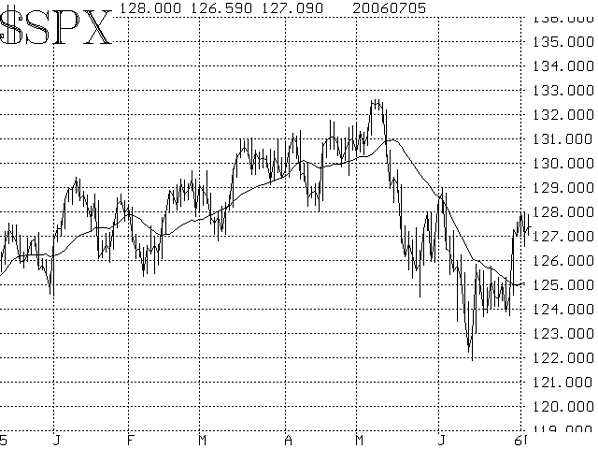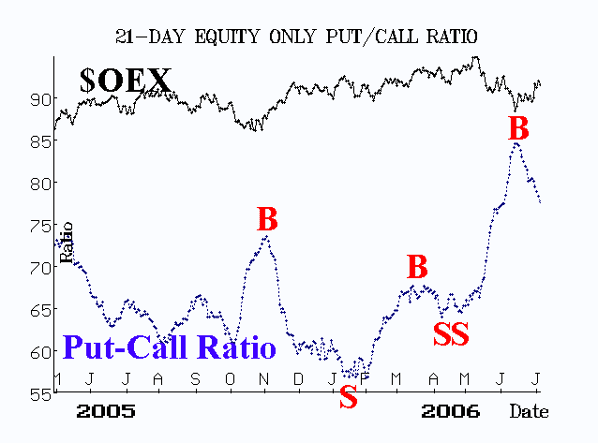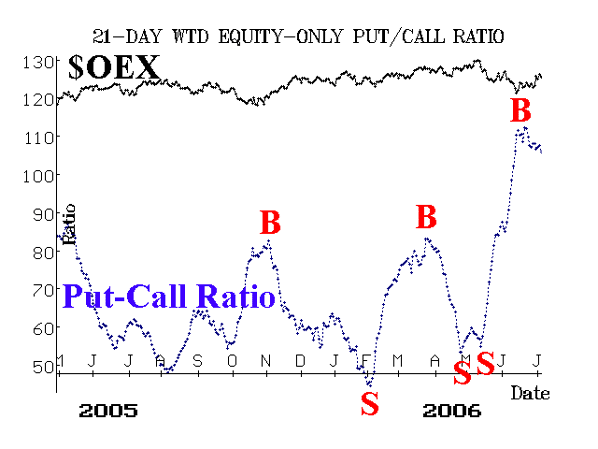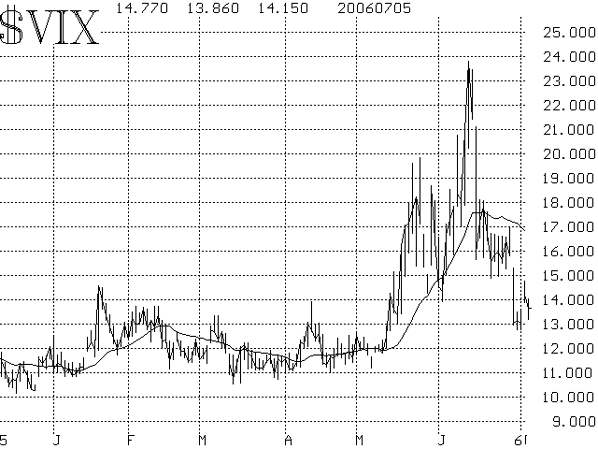Last week's upside breakout has persevered -- mostly. There hasn't been a lot of follow-through, but the first attempt by the bears to re-take control failed: Wednesday's post-holiday decline couldn't follow through, and Thursday's rally put the bulls back in charge. We expect this rally will try to work its way higher, if only sporadically, until at least the 1290 area on $SPX. Further gains beyond that are going to be very dependent on whether or not the rally gains strength as it progresses. So far it has not.
The 1255-1260 area on $SPX represents support now. As long as the average stays above that level, prices should be able to work higher. However, a close below there would negate any positive conditions and return the entire picture to a more bearish state. The two big overhead resistance areas are 1290 and 1325 (the yearly highs). It's doubtful the latter can be exceeded, but we'll have a better idea after we see how $SPX reacts at the 1290 level.

Equity-only put-call ratios remain on buy signals. That is, the lines in Figures 2 and 3 are declining on their charts. As you can see, the put-call ratios are still relatively high on their charts, despite the fact that their buy signals are a couple of weeks old. This is probably the strongest indicator we have that there is more potential left on the upside in this market.


Market breadth (advances minus declines) has jumped back and forth with every whim of the market. As a result, breadth was been a poor indicator all year long.
Finally, volatility indices ($VIX and $VXO) have remained subdued. They are in a neutral to bullish state now, with $VIX hovering near the 14 level. In fact, earlier this week they dipped to extremely low levels ($VXO was near 11), but we don't expect that to last -- merely because of the fact that actual volatility is likely to remain somewhat elevated with the uncertainties on the horizon, not the least of which is the Fed.

In summary, we continue to like the long side of this market for the short term, expecting to see $SPX challenge the 1290 level at least. Beyond that, we don't think the intermediate-term decline that started in April is over; we expect to see the June lows tested again, but perhaps not until late summer or early fall, 2006.
Lawrence G. McMillan is the author of two best selling books on options, including Options as a Strategic Investment, recognized as essential resources for any serious option trader's library.